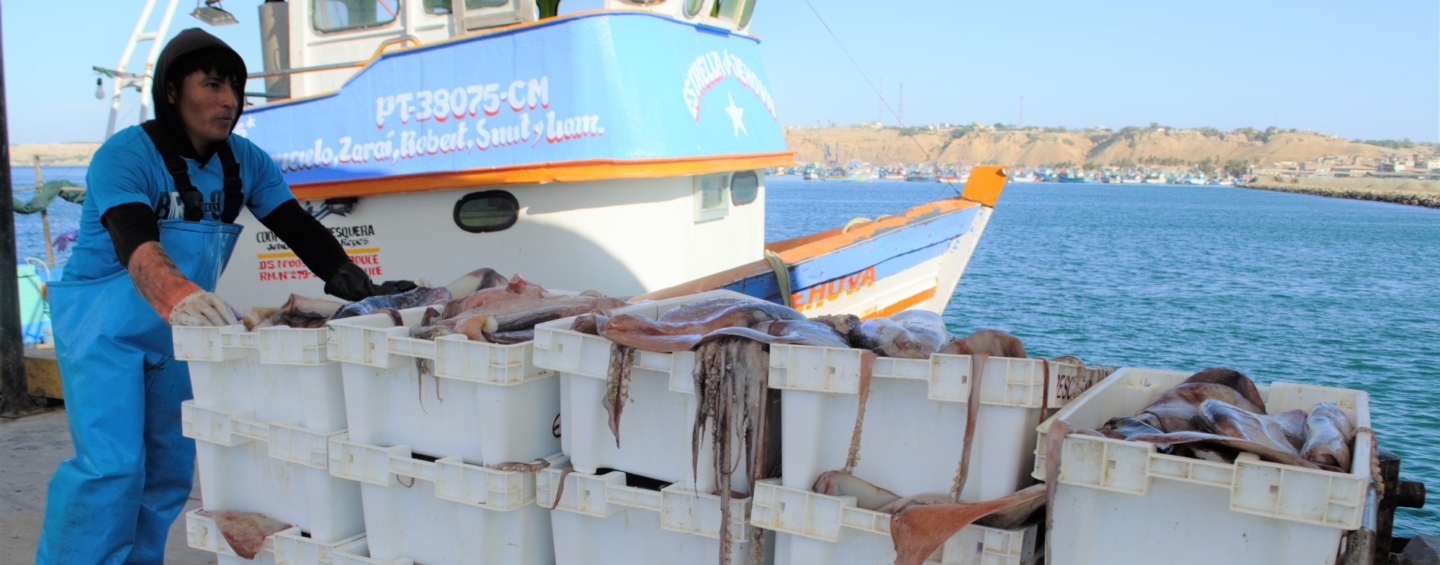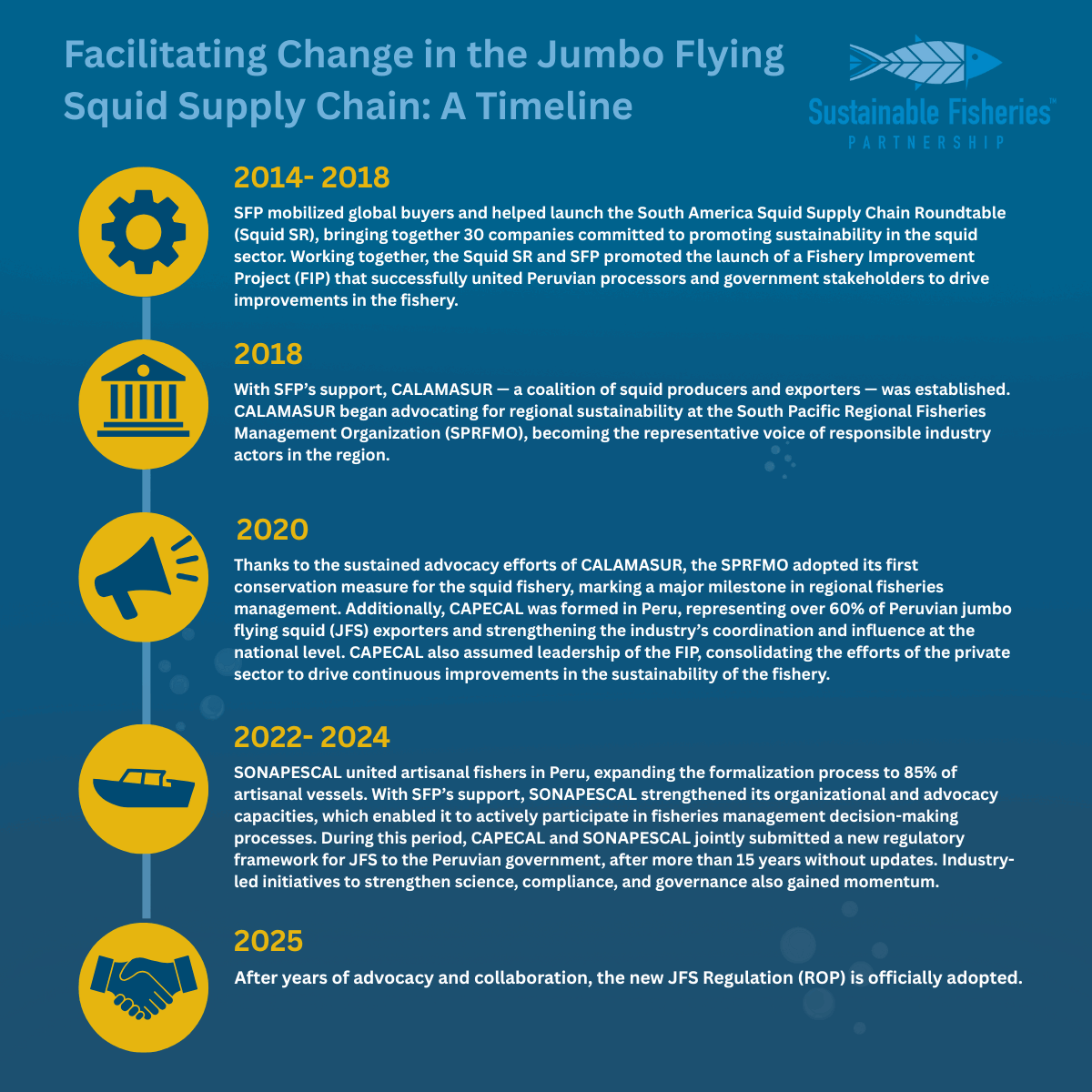What can those trying to protect the oceans and seafood supplies learn from the Peru jumbo flying squid fishery? It takes patience, persistence… and a little bit of “squid-pro-quo.
In March 2025, Peru adopted new regulations for the world’s largest squid fishery, strengthening management and safeguarding livelihoods for its artisanal fishers. While other posts detail the outcomes and why they matter, this blog focuses on what happened behind the scenes and the key lessons for improving fisheries- and broader environmental issues.
- First, this victory didn’t happen overnight but was years in the making. So don’t impose arbitrary deadlines and expectations on improvement efforts. Verify that progress is being made, but be realistic, stay committed and be resilient.
- Second, local collaboration was vital. Progress depended on fishers, domestic industry stakeholders, regulators, NGOs, and others coming together to resolve differences, align priorities, and work towards shared goals. So don’t work in isolation and make demands. Rather, engage and negotiate in good faith with key local groups and work alongside fishers to develop regulations they value and support.
- Third, it took real financial investment from different groups, an effort suppliers couldn’t have sustained if their customers had stopped buying. So don’t urge customers to “avoid” or “stop sourcing” from the fishery. Instead, encourage them to support suppliers who are investing in improvements and delivering real progress.
The successes in this fishery reflect the collective effort of local fishers’ groups, seafood companies, government agencies, and NGOs. SFP supported SONAPESCAL with organizational strengthening and helped ensure artisanal fishers could participate meaningfully in fisheries decision making. We weren’t alone — we never are — but SFP played a key role in aligning global buyers, local fishers, domestic industry stakeholders (like La Cámara Peruana del Calamar Gigante (CAPECAL)), and national authorities.
Improving long-term fisheries management is a bit like squid ink: bold, often opaque, and a bit messy, but ultimately, leaves a lasting mark. The Peru JFS fishery still faces challenges, but its progress shows what’s possible when we don’t give up on struggling fisheries, and when we apply the right tools, foster collaboration and stakeholder inclusion, and stay committed.
Visit our Facilitating Change in the Jumbo Flying Squid Supply Chain page for more on years of collaboration in this fishery.


